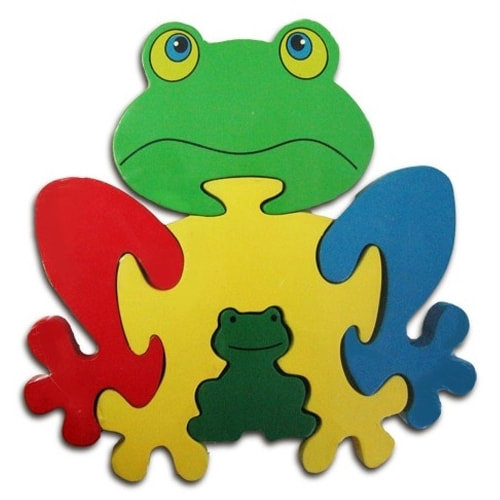It doesn't matter what kind they are; jigsaw, word searches, trivia, brain teasers, or Soduku. Doing puzzles gives our brain a workout. The best part is that no special clothes or membership is required! Studies have shown that working on puzzles utilizes both sides of the brain. Left-brain thinks logically and follows sequence while the right brain is creative, intuitive and emotional. When you try to put together a jigsaw puzzle, you harness both the brain powers. Puzzles improve our memory, cognitive function, and problem-solving skills. Word searches and crossword puzzles help build a better vocabulary, as well. Puzzles also help physical health by lowering our breath rate, reducing heart rate, and lowering blood pressure. Working on puzzles helps to stimulate us creatively and helps stimulate visualization. Research has shown that staring at the same image for long periods of time has the same effect as meditation; inducing calming and bringing peace of mind. Who knew that puzzles could do so much?
The origins of jigsaw puzzles date back to the 1760s when European map makers pasted maps onto wood then cut them up into small pieces. John Spilsbury, an engraver and mapmaker, is credited with making the first jigsaw puzzle in 1767. The dissected map has been a successful educational toy ever since. But a great deal has changed in the 250 years since the birth of the map puzzle. Children's puzzles have moved from strictly educational into the world of entertainment with puzzle subjects as diverse as animals, nursery rhymes, and modern superheroes. The biggest surprise to Mr. Spilsbury and his fellow puzzle-makers might be how adults have embraced the "puzzling" over the last century.
Puzzles for adults emerged in the turn of the Twentieth Century. By 1908 it was a full-blown craze in the United States. Since puzzles made of wood had to be cut one piece at a time, the cost of $5 per 500-piece puzzle in 1908 was far beyond the means of the typical worker who was, at that time, earning $50 a month. "High society, however, embraced the new amusement. Peak sales came on Saturday mornings when customers selected puzzles for their weekend house parties in Newport, Rhode Island, and other country retreats."
The next few years, however, brought significant changes to the puzzle industry. Parker Brothers, the famous game manufacturer, introduced figure pieces into its Pastime brand puzzles. Figure pieces made puzzles a bit easier to assemble. But the fascination with pieces shaped like dogs, birds, and other recognizable objects more than offset the somewhat reduced challenge. Second, Pastimes and other brands moved to an interlocking style that reduced the risk of spilling or losing pieces. Pastime puzzles were so successful that Parker Brothers stopped making games and devoted its entire factory to puzzle production in 1909. Following this craze, puzzles continued as a regular adult diversion for the next two decades.
With the onset of the Great Depression in 1929, puzzles for adults had a resurgence in popularity, reaching its peak in 1933 when sales reached an astounding 10 million per week! Completing puzzles gave people a sense of accomplishment when it was hard to come by otherwise. The national unemployment rate was rising to about 25%. With job-loss and incomes depleted home entertainment replaced outside activities like going to restaurants, nightclubs, and movies. Puzzles were becoming more affordable and "many of the unemployed architects, carpenters, and other skilled craftsmen began to cut jigsaw puzzles in home workshops and to sell or rent them locally. During the 1930s craze for puzzles, drugstores and circulating libraries added puzzle rentals to their offerings. They charged three to ten cents per day, depending on size."
So how can you celebrate today? Spend time putting together a jigsaw puzzle with a friend, or grab a cup of coffee and complete a Sudoku or crossword puzzle. Use #NationalPuzzleDay to post on social media. If you don't already work on puzzles, today might be a good time to start!
Tomorrow is Wednesday and that means my friend and mentor, The Dharma Frog will stop by for another life lesson. Please join me. Until then, I wish you all
PEACE.
https://memoryjoggingpuzzles.com/why-jigsaw-puzzles-good-for-the-brain/

 RSS Feed
RSS Feed